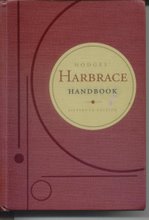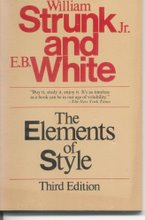Grammar Tip of the Day (Nos. 198 & 78)
Harbrace Chapter 1 : Sentence Sense, begins with the rule: To think more clearly and write more effectively, understand how sentences work.
Writing a clear, precise sentence is an art, says Harbrace, and you can master that art by developing your awareness of what makes sentences work.
In his handwritten, mimeographed class notes, Ferdinand E. Ruge stated this as, "Every sentence must lend itself to logical analysis. In other words, every sentence gotta make sense!"
Mr. Ruge was a legendary English teacher at my high school. More Patton than Mr. Chips, he was an octogenarian in 1972 but as devoted as ever to teaching his students to write "clear, concise, reasonably graceful" English. He referred to Harbrace (or the dictionary) as "the Good Book" and taught from his own set of parallel rules, which were assembled posthumously in a pithy volume, Ruge Rules.
More than once, Mr. Ruge posed some variation of the following question: "If a little green man from Mars came down to earth in a flying saucer and asked you for the three most important rules of the English language, what would you tell him?"
With the index, middle and ring fingers of his left hand shooting up on cue, he would answer, like a voice from the Old Testament:
"1- Place a period at the end of each complete thought.
2- Set off non-restrictive phrases and clauses in commas, and
3- Place a hyphen between two or more words used together as a single adjective before a noun."
There may be more important rules of grammar, but 35 years later, my classmates and I certainly know Mr. Ruge's top three.
Subscribe to:
Post Comments (Atom)







No comments:
Post a Comment